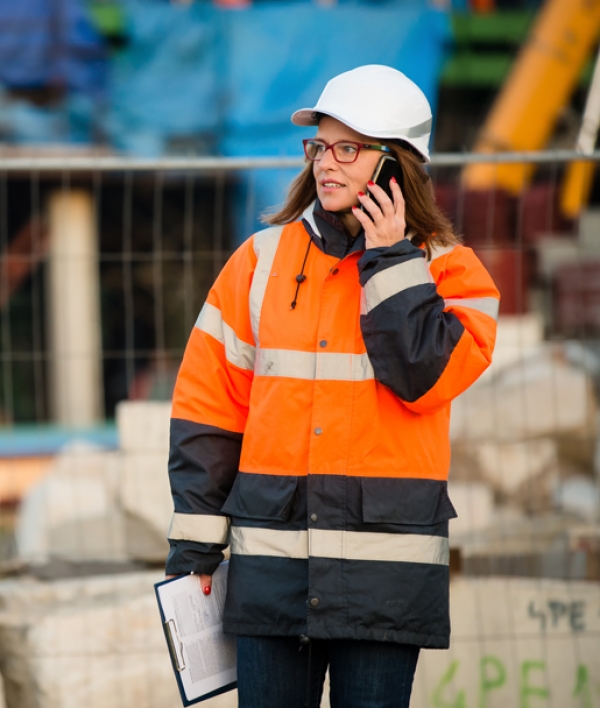Workwear has come a long way since the days of boiler suits, aprons and overalls, and even the office staple of a shirt and tie has come under scrutiny. Working clothes for professional tradesmen and women has become something of a science, with fabrics and garments developed to suit everything from different working environments and weather conditions to body shapes.
While the general trend has been towards more casual workwear there are definite benefits to providing a uniform for your staff, from increased productivity to greater customer confidence in your business. Then there are professions where your commitment as an employer to health and safety standards and regulations require you to provide personal protection items.
HOW DOES WORKWEAR IMPACT ON PERSONAL WELLBEING AND PERFORMANCE AT WORK?
By ensuring your workers are safe it improves morale and reduces staff absence and sick leave, so start by identifying and risk-assessing the possible hazards in your business.
We always think of workwear as hard hats and high visibility jackets, but uniforms are worn across more sectors than you think, from the barista who hands us our morning coffee to the supermarket worker who stocks the shelves. Some, including cleaners and warehouse workers, are engaged in jobs that can expose them to chemicals or dirt which can affect their health.
Good health and safety measures, including the provision of protective clothing, allows your staff to complete their tasks easily and safely. This promotes a positive working environment where staff are motivated.
GOOD QUALITY AND SAFER WORKWEAR INCREASES PRODUCTIVITY AS WORKERS WHO FEEL UNSAFE WORK MORE SLOWLY
Personal Protective Equipment (PPE) used to protect workers from health or safety risks at work varies from safety helmets, gloves, hi-vis clothing, safety footwear, sensory protection and respiratory equipment. Your industry and the type of work your employees undertake will determine what PPE you are required to provide to be compliant with the Personal Protective Equipment at Work Regulations 1992.
Make sure you are aware of your obligations and source quality equipment that is fit for purpose. Employers need to check PPE carries the CE marking which provides a measure of confidence that an independent third party has assessed the product against recognised standards or other specifications. Train your staff on how to use the equipment and introduce procedures for reporting damaged or defective equipment.
WELL-FITTING WORKWEAR IS KEY TO WEARER ACCEPTANCE AND WELLBEING
Ensure your uniforms fit the individual as they are something your employees will wear every day so should feel happy and comfortable in. If they don’t understand why they need to wear PPE or have no say in choosing their workwear they are more likely to refuse to wear it and use it. By listening to the views of your workforce you can boost morale and productivity. Comfort is key, but safety and health are critical.
Other benefits from company workwear includes a boost in employee productivity by allowing the staff to save time during their morning routine, while in the retail sector uniforms are especially helpful for customers who need to ask for assistance which, in turn, will boost sales.
WORKWEAR HELPS PREVENT COMMON CAUSES OF ILL-HEALTH AND INJURY
Slips, trips and falls contribute to 31% of non-fatal injuries to employees, according to the Health and Safety Executive. In other research nearly 75% of working plumbers experience problems with their knees. Since these will affect an employee’s long-term health and business productivity, it makes sense for employers to try to reduce the risk of such incidents happening.
Many workers from nurses to postal workers and builders are required to spend a significant part of the day on their feet, so supportive, high-quality, comfortable footwear is important to minimise the risk of injuries. Safety codes indicate the level of protection boots offer against particular hazards and different ratings offer features such as anti-static, puncture resistance, toecap protection and water resistance. Matching the right safety code to the task will help to prevent work-related foot injury.
WORKWEAR BOOSTS WORKPLACE PERFORMANCE
When staff are wearing a uniform they are more conscious of their actions, so if they work in a public setting it can help to promote positive behaviours and attitudes. Uniforms also have the power to foster unity and prevent peer judgement, while also creating a professional image of your brand which can increase customer confidence and make the difference between a customer choosing to work with you or a competitor.
When efforts at personalisation to each individual staff member is also included in your workwear, this helps your employees feel recognised as people, not just as employees, where they feel part of a team working towards a shared goal.
AND FINALLY…
Workwear should provide maximum comfort and functionality, and providing the required PPE and clothing your staff need sends out a clear message that you value your workforce and run a responsible business.
Failure to do the above could leave you open to personal injury claims. If an accident happens and the injured employee states that they were not provided suitable PPE or been told how to use it, you could receive a hefty fine.
Our experienced workwear and PPE team can offer footwear audits for your business to ensure safety, quality and compliance to the relevant standards to give you complete peace of mind. They can also advise on different workwear materials and fits and on the relevant guidelines you need to adhere to in your sector. Call our workwear team today for more information about our wide range of branded workwear, corporate and safety wear on 01782 344000.
